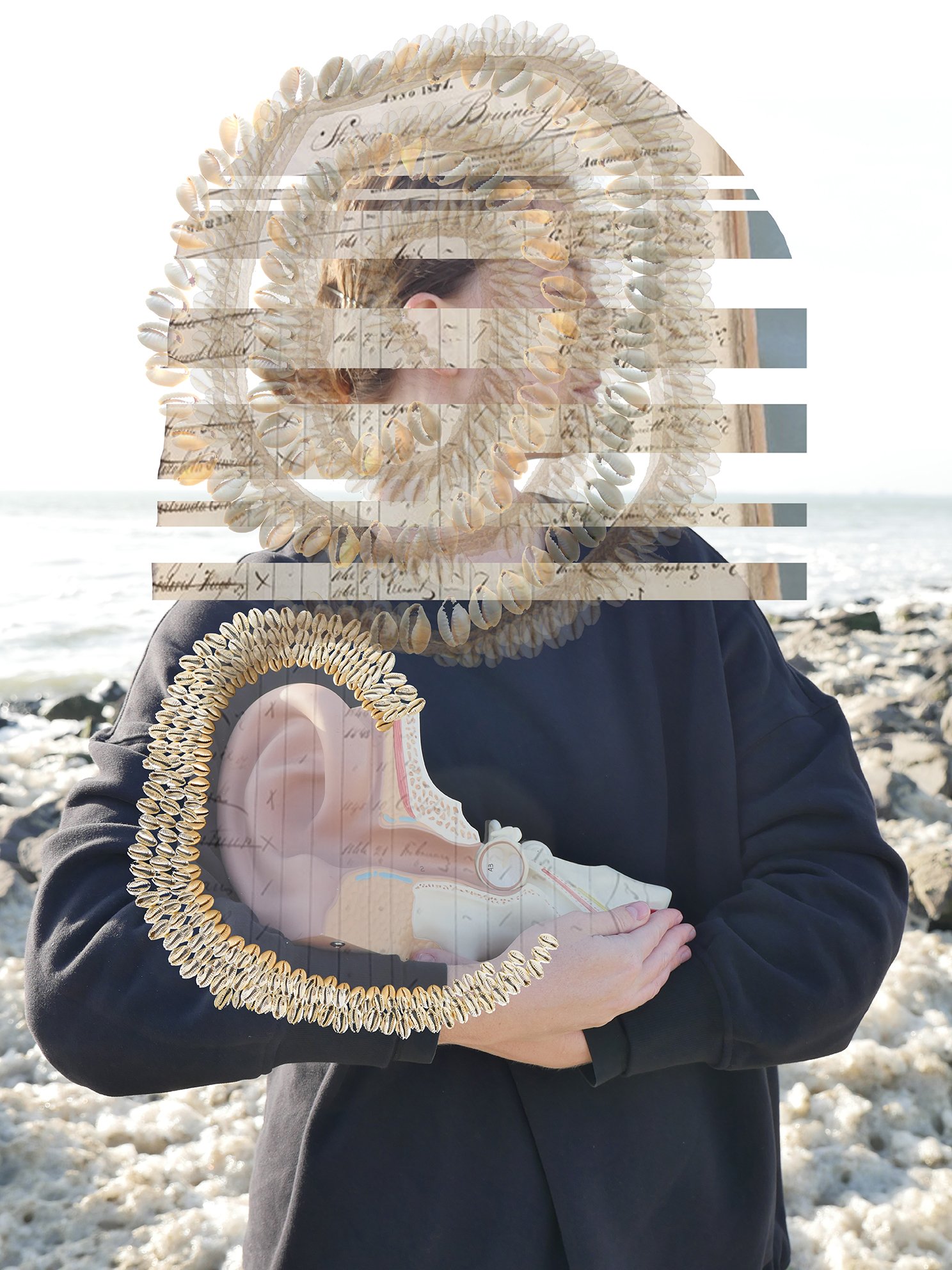
monetaria moneta
9 pigmented inkjet prints on Hahnemüle White Velvet paper
70 x 52,50 cm each
2020
Pressing a shell to your ear brings you the sound of the sea. Sometimes one needs a very large ear to hear the sounds of a very small shell, to listen to its history. The ‘Monetaria moneta’ - used as currency in the Trans-Atlantic slave trade - is such a shell.
For this series of photocollages entitled Monetaria moneta I visited places along the coast of the Dutch province Zeeland, such as Domburg, Westkapelle, Ritthem, de Kaloot, and Vlissingen. Here, the tides and currents of the North Sea have washed money cowries ashore for many hundreds of years, and still do today. They emanate from the bellies of VOC ship wreckages which sank during storms in sight of the harbor. Brought from the Maldives, the money cowries were auctioned by the Verenigde Oost-Indische Compagnie (VOC) to, amongst others, the West-Indische Compagnie (WIC) and the Middelburgse Commercie Compagnie (MCC) who used them as currency to buy enslaved people along the West coast of Africa. The money cowries on the beaches of Zeeland are a witness from this past and present us with poignant traces of the significant role the Dutch played in the Trans-Atlantic slave trade.
For this work I performed a series of actions at locations where these shells can still be found as they wash ashore. In the presence of a large anatomic ear I embody to what extent we are willing to hear and see, speak about, and listen to a painful history and its impact on the present. The photocollages document this performance. The cowry shells used in the photocollages stem from the jewelry and fashion industry. The cowry shells, as well as historical documentation related to the slave trade from the WIC and the MCC archives, intervene in the performance and take their own position in the landscape.









Installation of Monetaria moneta during the group exhibition Untitled (Spirit of Changing Times) (2020), at gallery Lumen Travo, curated by Marianne van Tilborg. Other participating artists: Thierry Oussou and Atousa Bandeh.
